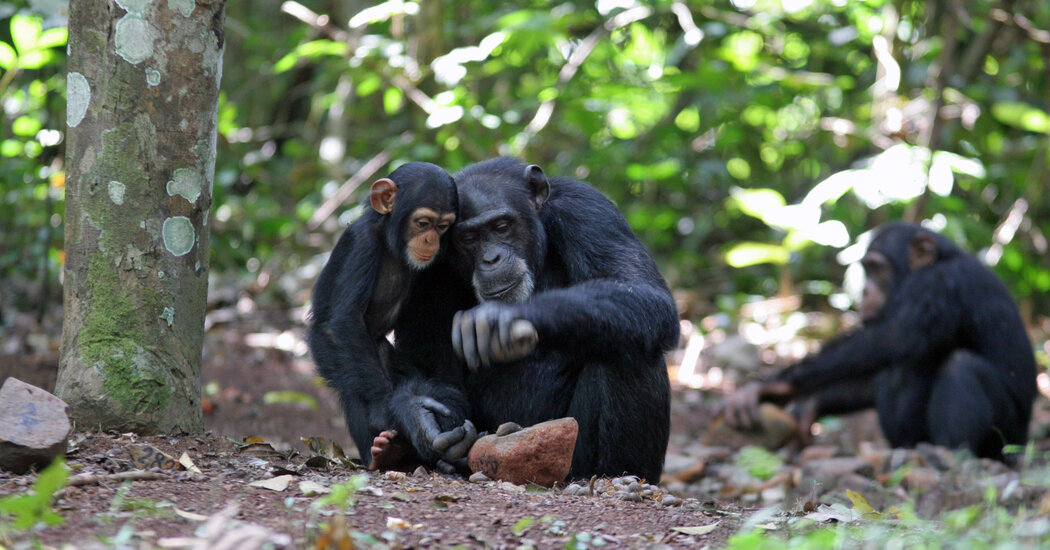Researchers describe a link between genetic relatedness and sophisticated tool use in primates in East and Central Africa, suggesting their culture is cumulative.
It’s amazing what chimpanzees will do for a snack.
In Congolese rainforests, the apes have been known to poke a hole into the ground with a stout stick, then grab a long stem and strip it through their teeth, making a brush-like end. Into the hole that lure goes, helping the chimps fish out a meal of termites.
How did the chimps figure out this sophisticated foraging technique and others?
“It’s difficult to imagine that it can just have appeared out of the blue,” said Andrew Whiten, a cultural evolution expert from the University of St. Andrews in Scotland who has studied tool use and foraging in chimpanzees.
Now Dr. Whiten’s team has set out to demonstrate that advanced uses of tools are an example of humanlike cultural transmission that has accumulated over time. Where bands of apes in Central and East Africa exhibit such complex behaviors, they say, there are also signs of genes flowing between groups. They describe this as evidence that such foraging techniques have been passed from generation to generation, and innovated over time across different interconnected communities.
In a study published on Thursday in the journal Science, Dr. Whiten and colleagues go as far as arguing that chimpanzees have a “tiny degree of cumulative culture,” a capability long thought unique to humans.
From mammals to birds to reptiles and even insects, many animals exhibit some evidence of culture, when individuals can socially learn something from a nearby individual and then start doing it.
But culture becomes cumulative over time when individuals learn from others, each building on the technique so much that a single animal wouldn’t have been able to learn all of it on its own. For instance, some researchers interpret using rocks as a hammer and anvil to open a nut as something chimpanzees would not do spontaneously without learning it socially. Humans excel at this, with individual doctors practicing medicine each day, but medicine is no one single person’s endeavor. Instead, it is an accumulation of knowledge over time.
